In part 2 of my “Planning for autumn color”, I will discuss some of the plants that have succeeded (and a few that haven’t) in providing autumn blooms in my Colorado Front Range garden. In part 1, I discussed why creating an autumn garden was so important to me (see here: Planning for autumn color (Part 1): prologue (mrvintageman.com)).
I know that a post about autumn color when spring has just arrived might seem a little odd. But to have a garden that shines in fall requires some planning and forethought, and spring is the perfect time to do so.
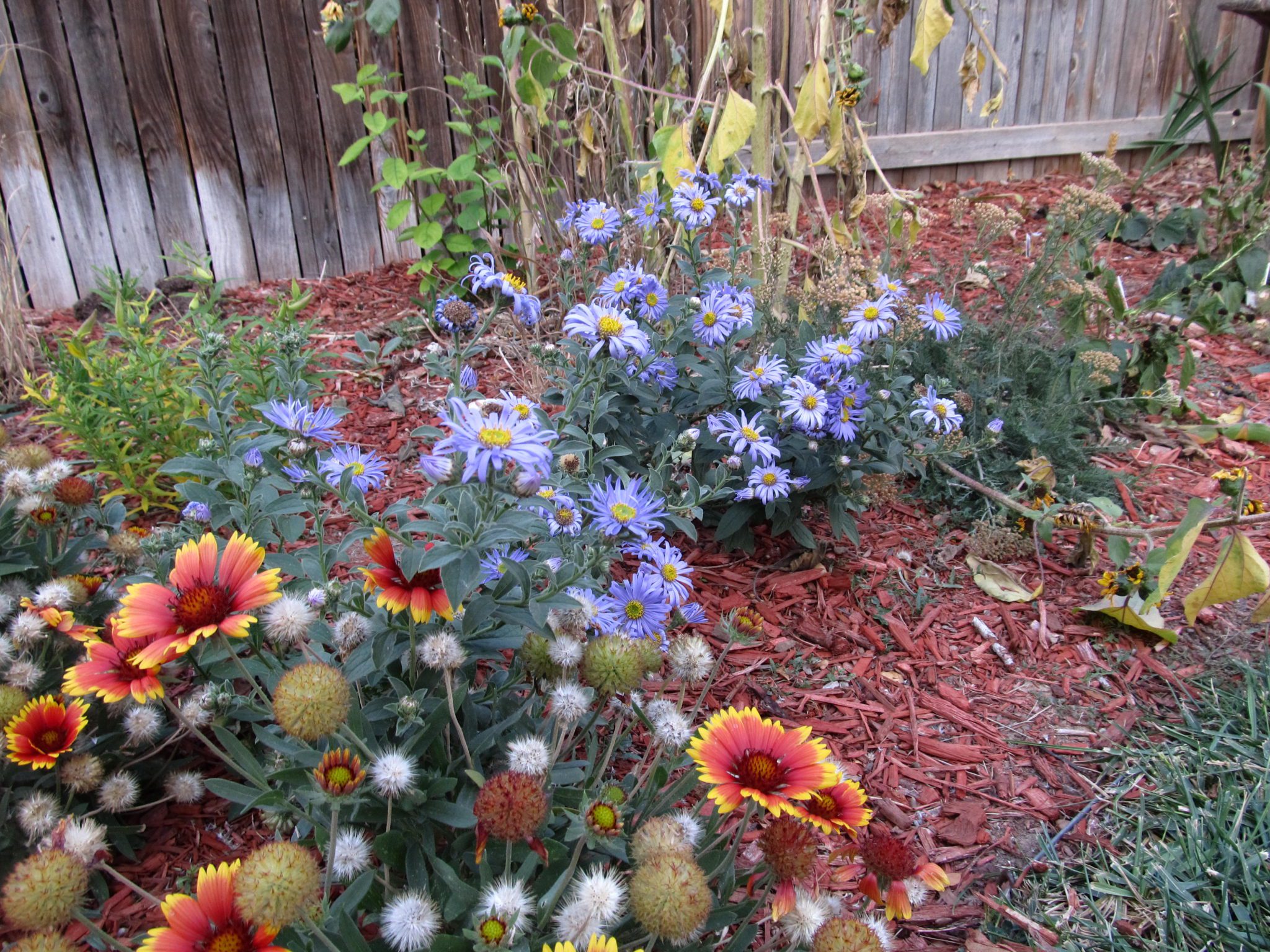
When we think of autumn color, I am sure most of us picture in our minds a tree garbed in it’s fall finest. After all, what can compare to a towering plant that reaches 40-70 feet tall all swathed in colors or yellow, red or purple?
Yet, it is when we lower our eyes to ground by our feet that we can discover the more intimate side of the fall display. The color on trees and shrubs can be somewhat fickle and unreliable, some years being underwhelming. This is because the display is wholly dependent on conditions that are beyond the gardener’s control. The autumn bloomers, on the other hand, are reliable old friends who reward us year after year.
Late summer blooms
First, let’s begin with the late summer bloomers that often carry over into early autumn. Peak bloom on these plants is usually several weeks before the autumn equinox, but they often keep going strong (if a little raggedy) into late September, and in some years all the way into early October.
For example, Black-eyed Susan’s usually begin flowering in mid-to-late July in my yard and usually hit their peak sometime in late August. But as you can see below, they often still look good in early fall. In the picture below, taken in early September, the Black-eyed Susan “Goldsturm” is happily blooming among fall flowering Asters.
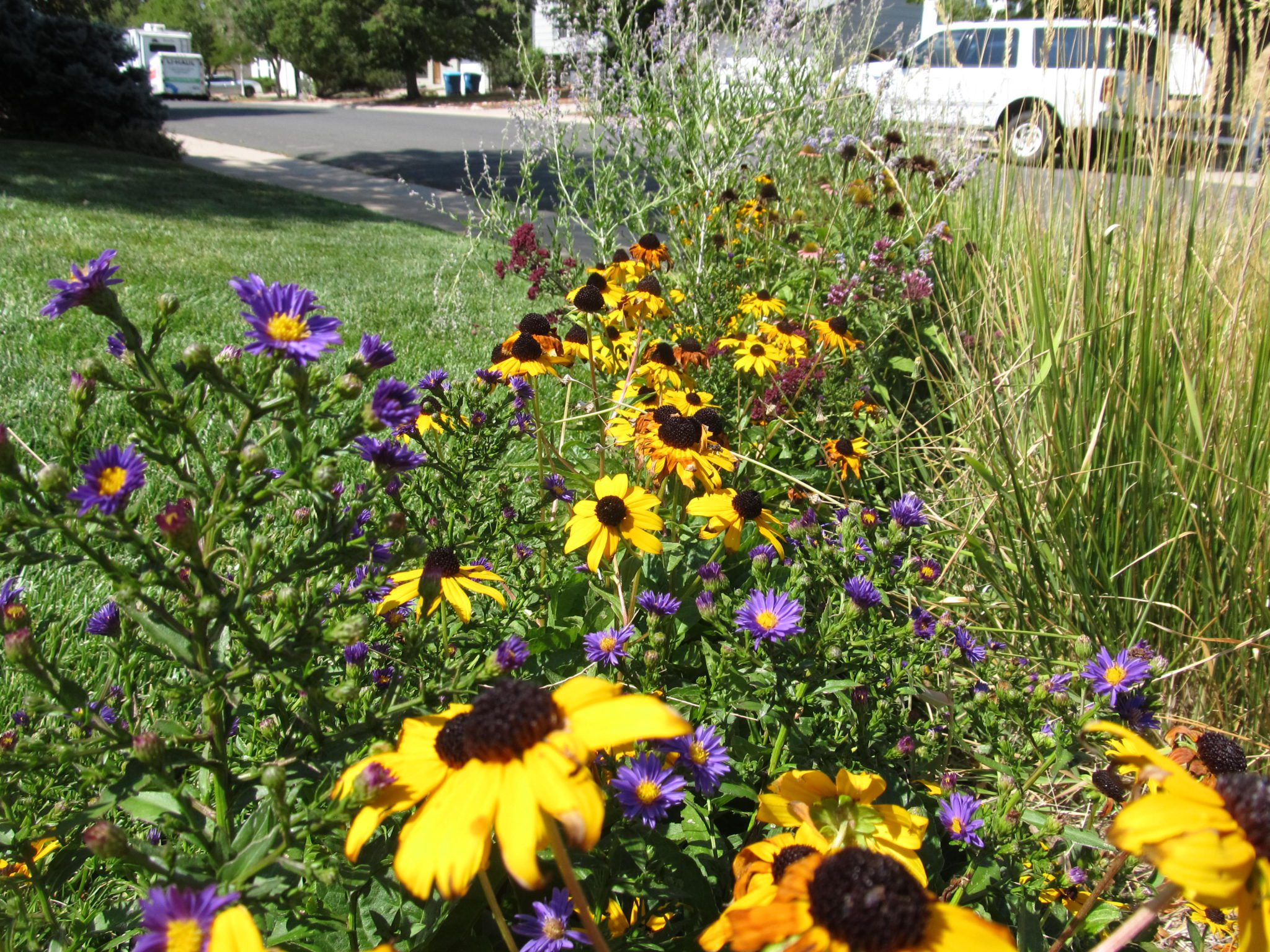
Below we find Jupiter’s Beard (centranthus ruber) blooming in mid-September. Jupiter’s Beard is primarily an early to mid-summer bloomer, but will often put on a second display in very late summer, even without deadheading.
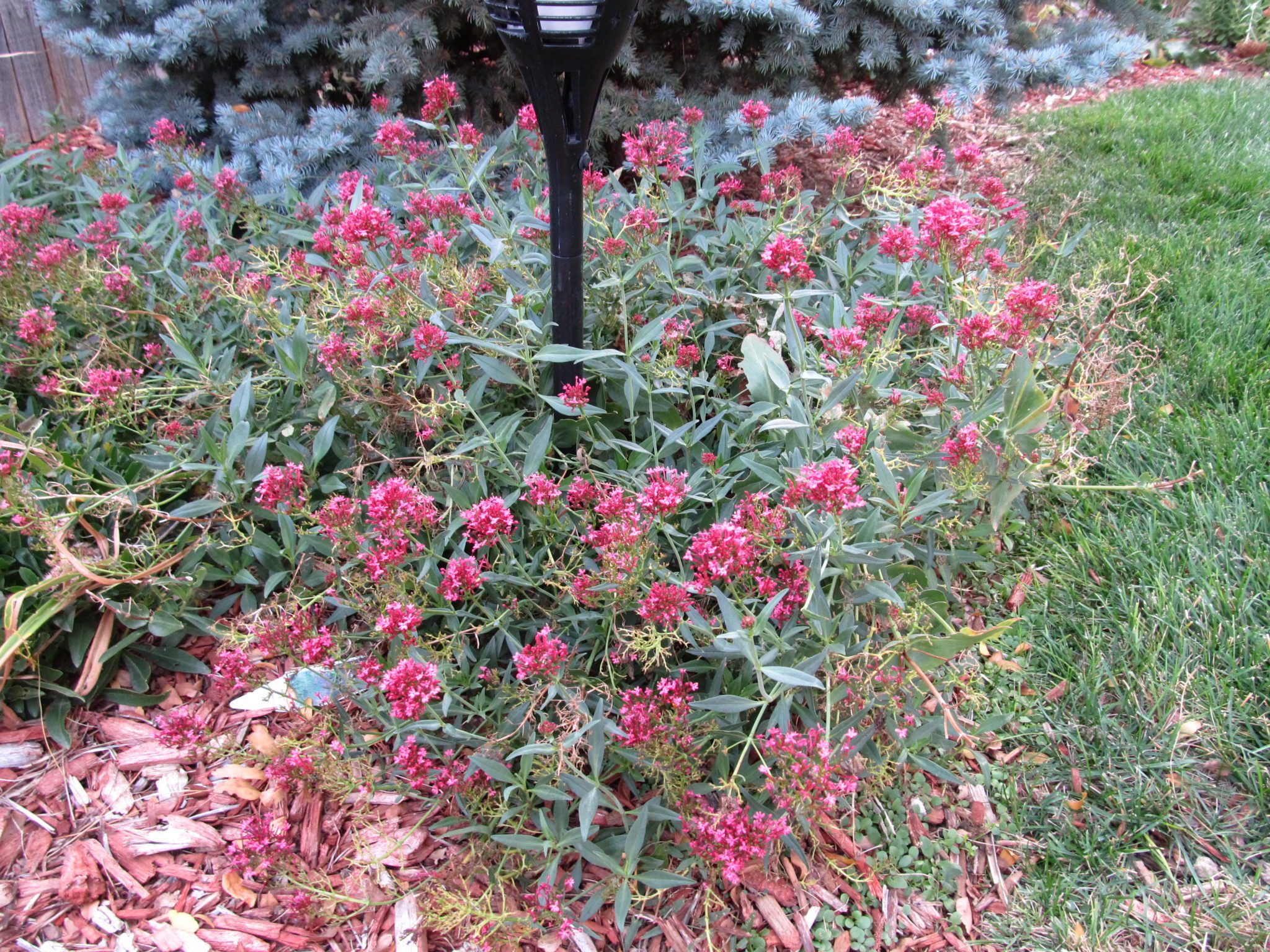
Finally, we come to Russian Sage, a plant that seems to bloom up to 3 months for me. This picture was taken in early October, but these sages started bloom way back in early July! As you can see, the sage harmonizes quite nicely with the aptly named Sedum ‘Autumn Joy’.
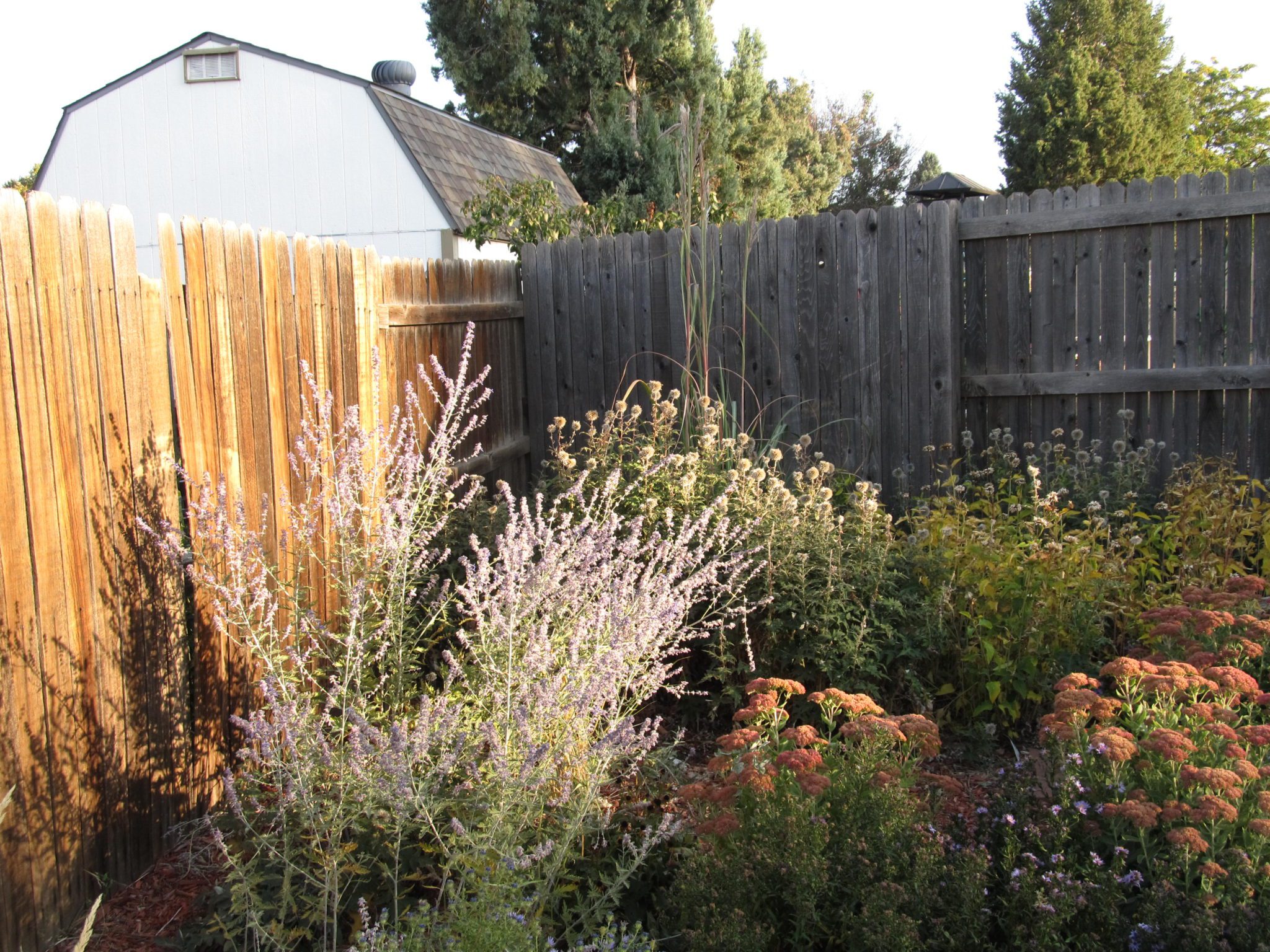
Now, let’s talk some of my autumn All-Stars:
Asters
Literally all-stars, at least in aster’s case: for aster means ‘star’ in Latin. If there is one flower that is synonymous with autumn, asters must be it. While most states have native asters, the ones from New York and New England tend to get all the PR. For good reason. They are upright and hardy plants who, in the right conditions, can put on a display from very late summer right up until the first hard freeze.
I would say that asters are among my favorite plants, and I have them mixed in with almost every single border in my yarden.
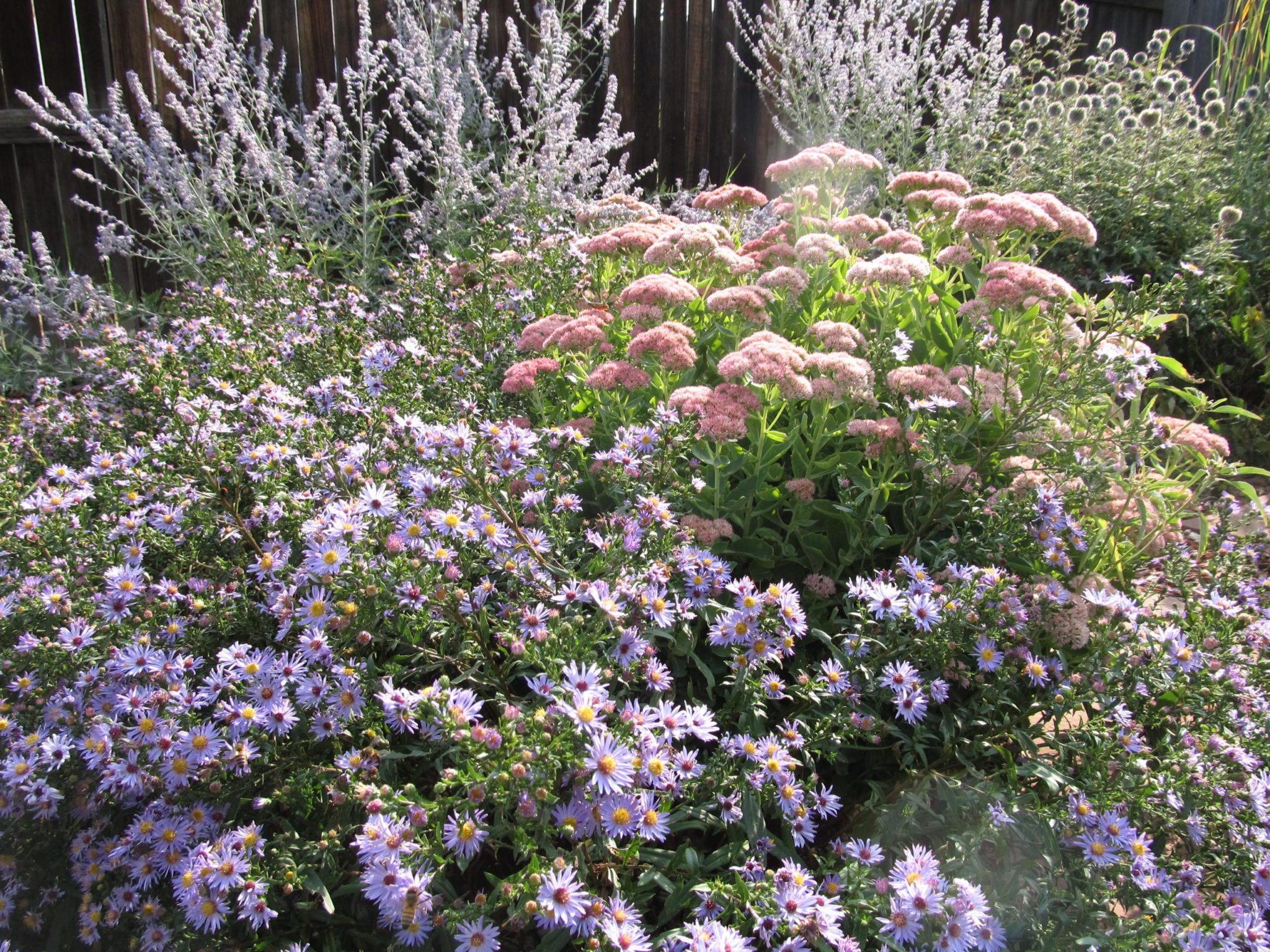
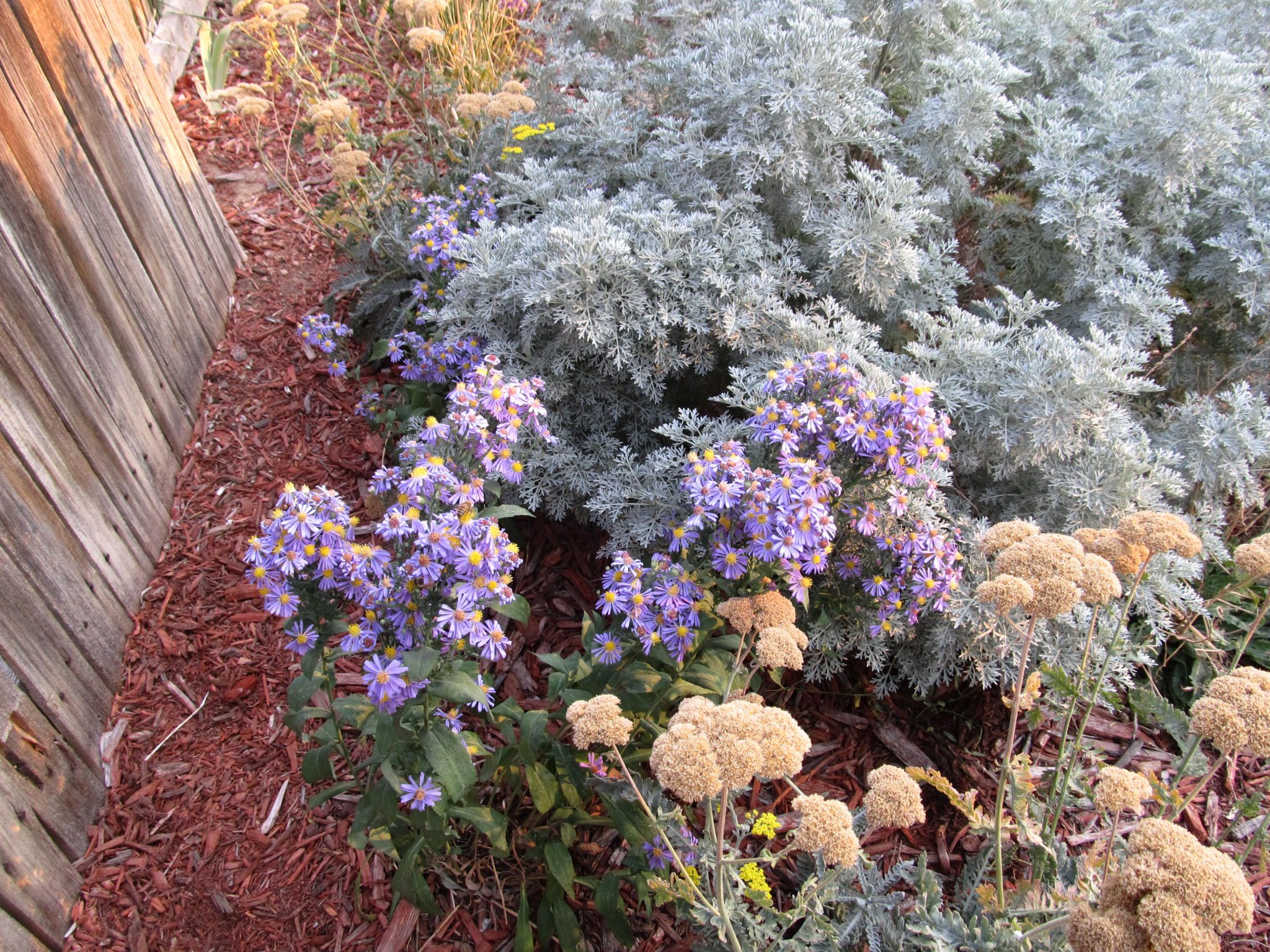
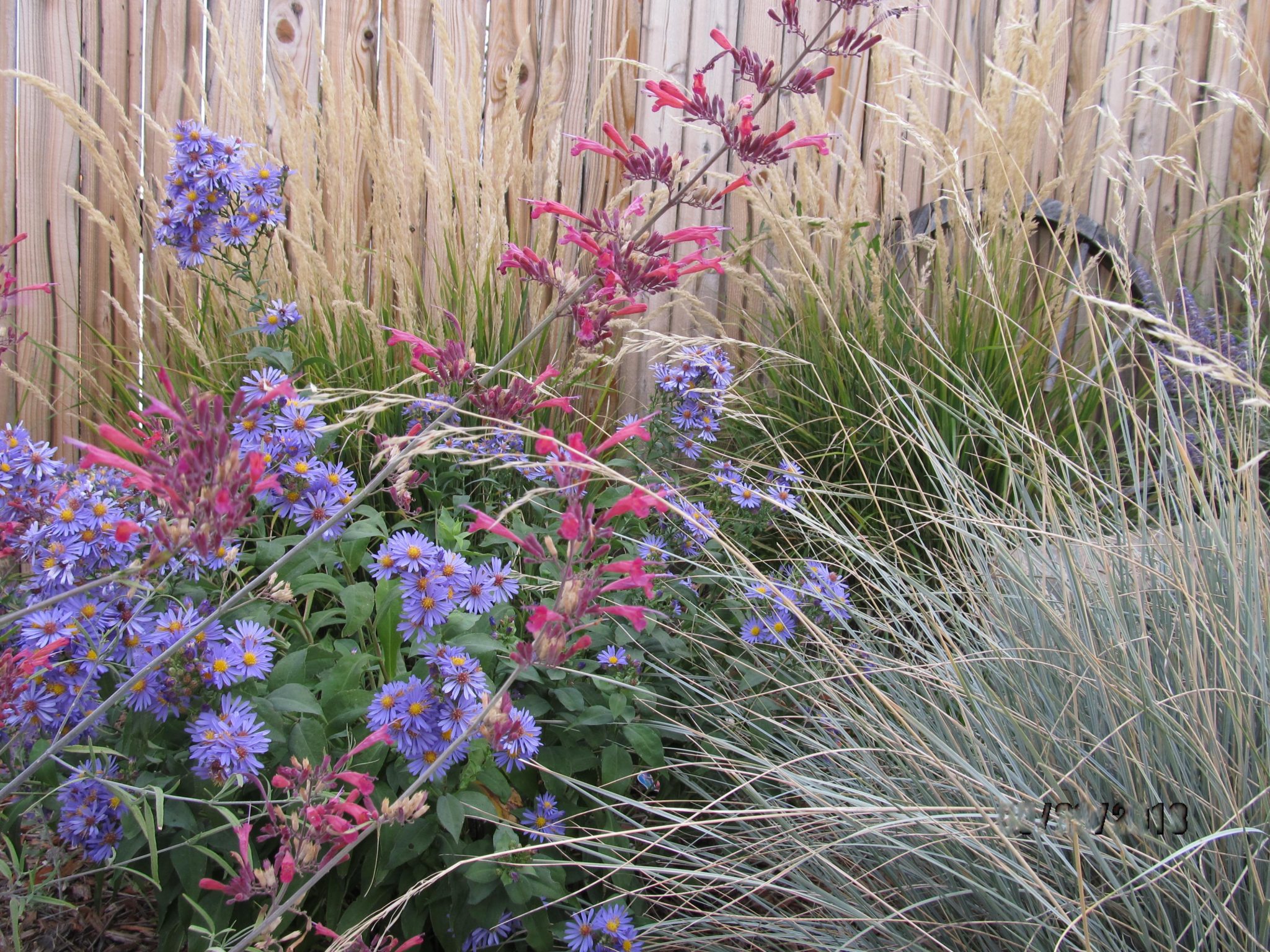
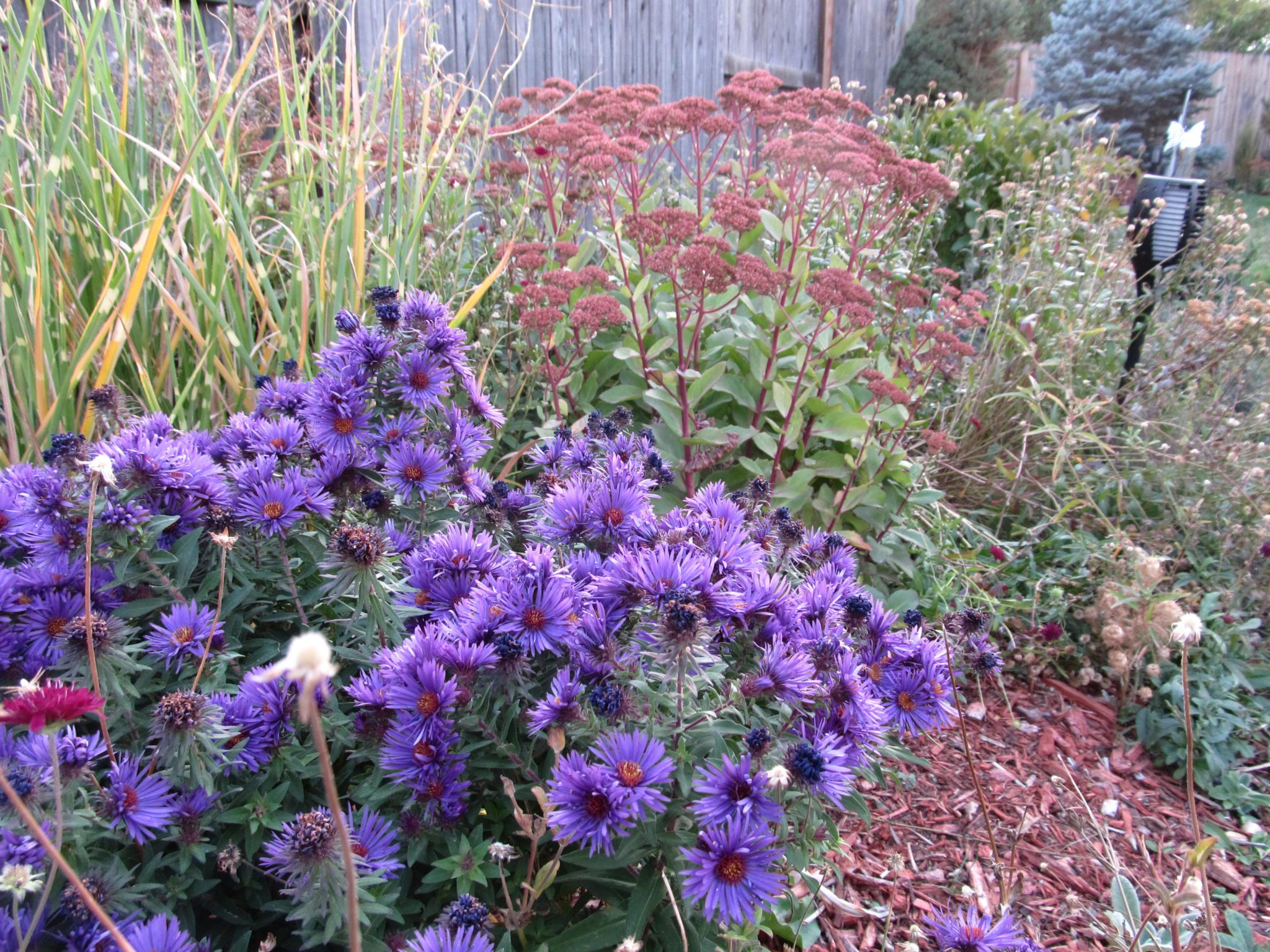
Sedums
Another good fall bloomer in my yard are the upright sedums, such as sedum ‘Autumn Joy and sedum ‘Autumn Fire’.
Upright sedums in my area begin producing green “puffballs” usually in mid-August. The tiny flowers themselves don’t open up until September. These flowers initially start off with a pinkish hue (such as you see below), but as the autumn nights get colder they grow darker and redder.
It’s not just the flowers that provide some autumnal fireworks; if the really deep freezes hold off long enough, the succulent leaves of some upright sedums can turn to a golden yellow color.
Sedums of all heights and varieties are a big hit with pollinating insects.
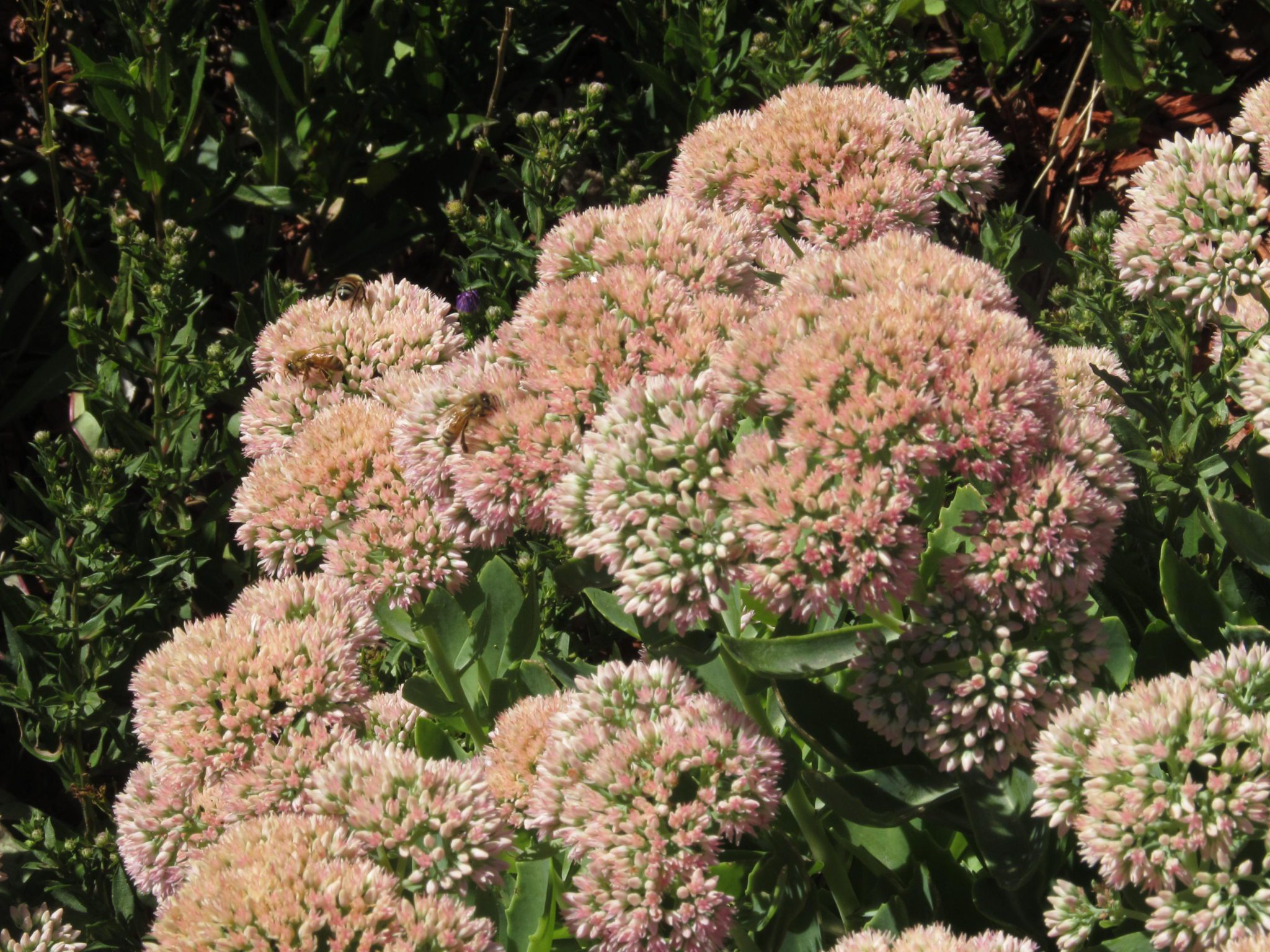
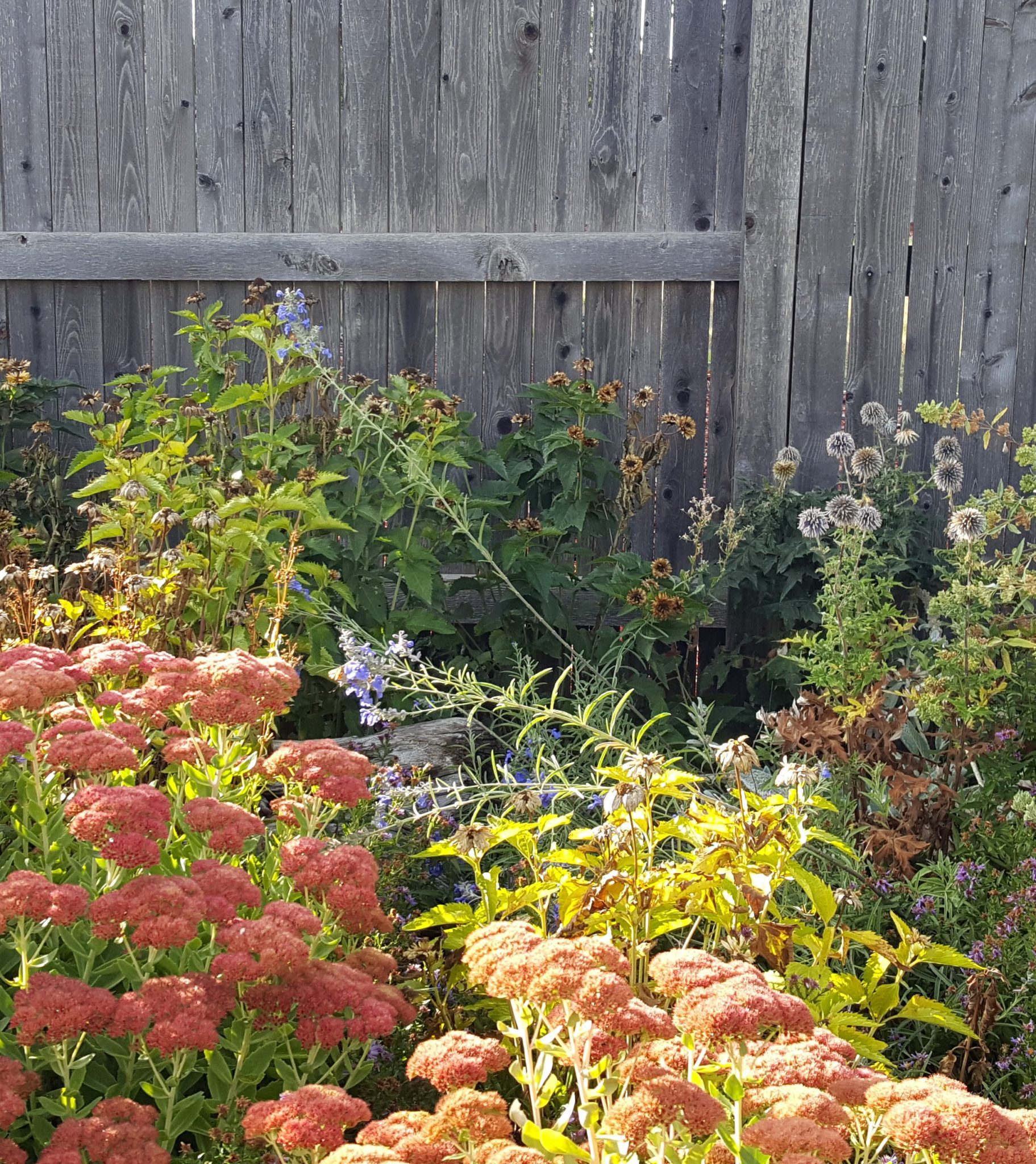
Salvia
Look again at the picture above. While the sedums are rightfully the stars of this autumn display, there is a member of the supporting cast that has also taken to the stage. Right behind the sedums is a tall, lanky plant sporting flowers the color of blue autumn skies. This plant is salvia azurea, also known as Prairie Sage.
Prairie Sage is an unassuming plant most of the growing season. But in late summer it puts on quite a growth spurt, when it turns into a lanky plant that like to sprawl all over its neighbors. But that’s alright, for its blue flowers provide a cooling contrast to all the yellows, oranges and reds from the rest of the autumn fireworks.
Chrysanthemums
Another plant that is synonymous with autumn has to be chrysanthemums, or ‘mums’.
I’ll be honest, I haven’t had much success with mums. Oh, I do alright when I pick some up from a local nursery in late summer to put in my outdoor containers. They provide quick and easy fall color. The problem with these mum is that they have been bred and raised to display a profusion of blooms for just a single season. They are not hardy enough to survive the winter, either in the pot or in the ground. I have nursed a few along for year or so, but they eventually disappear.
For a mum that comes back year after year, the gardener needs to plant “hardy” mums. I’ve been put off by these kinds of mums because I have read they require lots of moisture, something sorely lacking in my neck of the woods, as well as lots of TLC.
However, I have researched garden catalogs, and may have found a few that might tolerate the conditions in my garden, so I might give them a try this year. If so, I will provide an update on how they are doing in the fall.
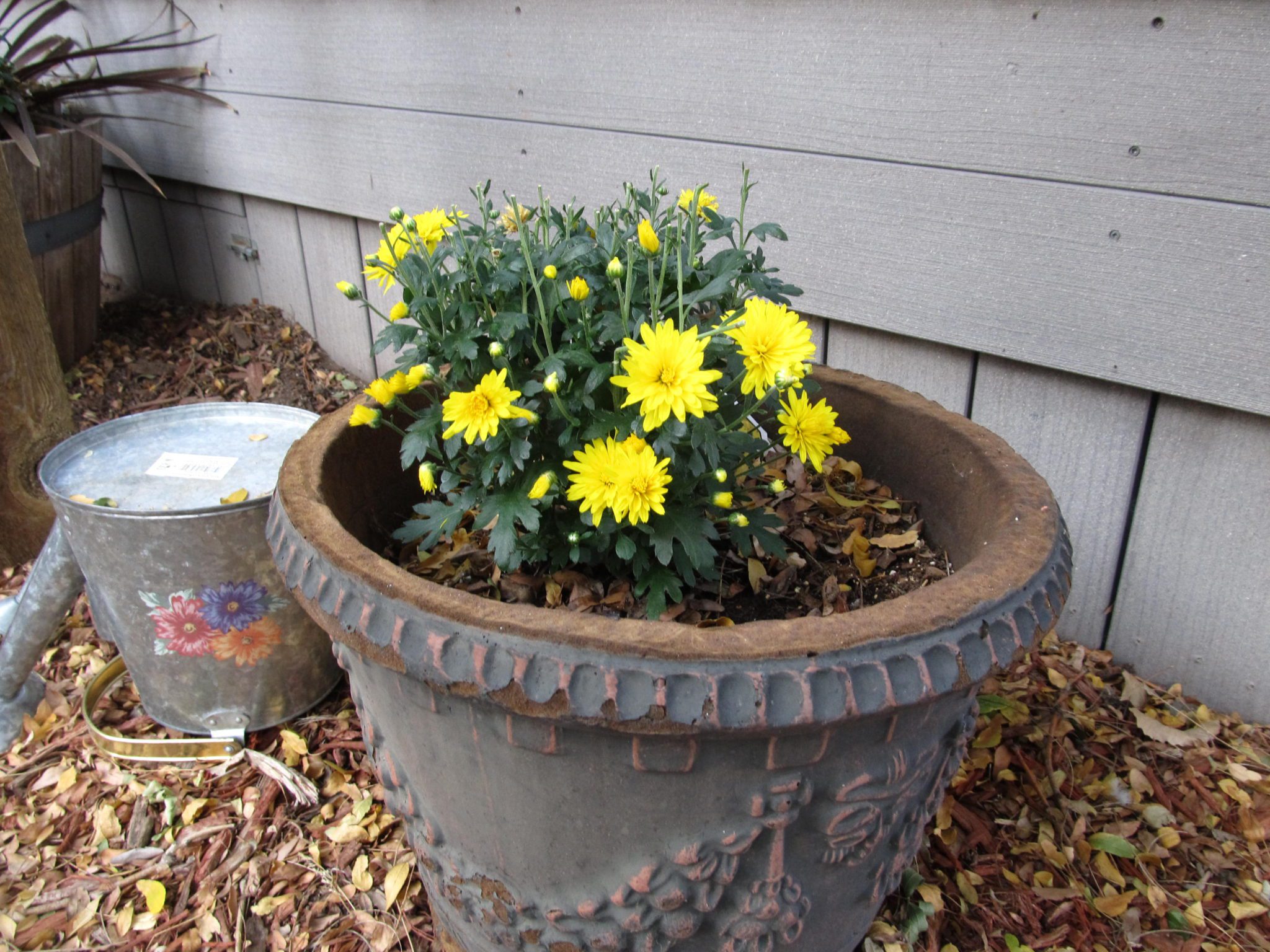
Ornamental grasses
It’s not just flowers that provide blooms in autumn. Ornamental grass “flowers”, known as ‘inflorescences’, add a stately presence to the garden. While inflorescences are rarely colorful (since grasses don’t need bugs or birds to pollinate them), they are still welcome additions to the autumn garden.

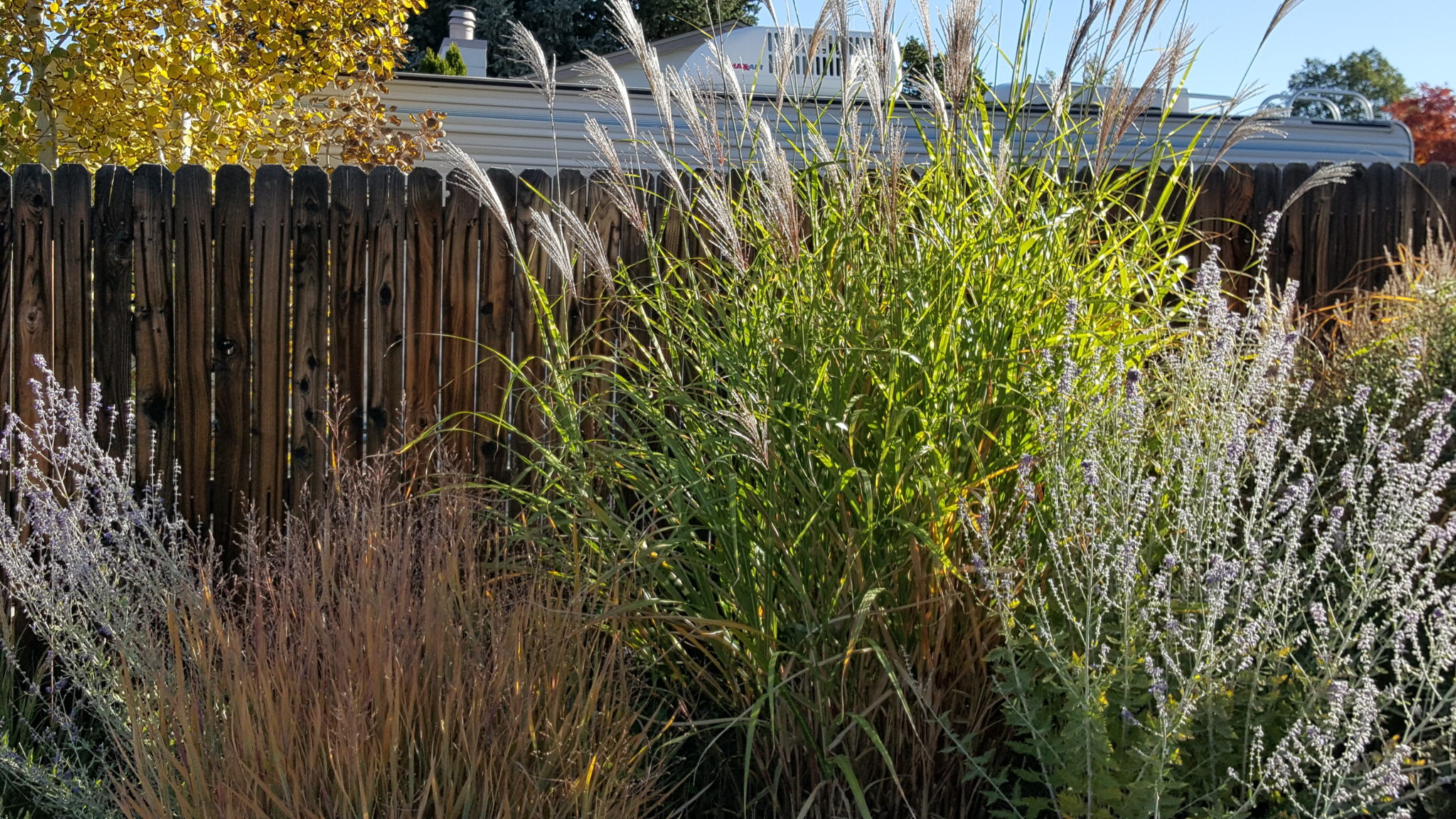
Others
Japanese Anemone is a fall blooming plant that used to do well in my garden. Planted next to the front stoop, it got moisture from the sprinkler system, and enough sunlight to bloom profusely.
Unfortunately (for it), the honeylocust tree in my front yard has grown large enough to block enough light reaching it. I’m going to transplant it somewhere in the backyard later this spring in hopes of reviving it.
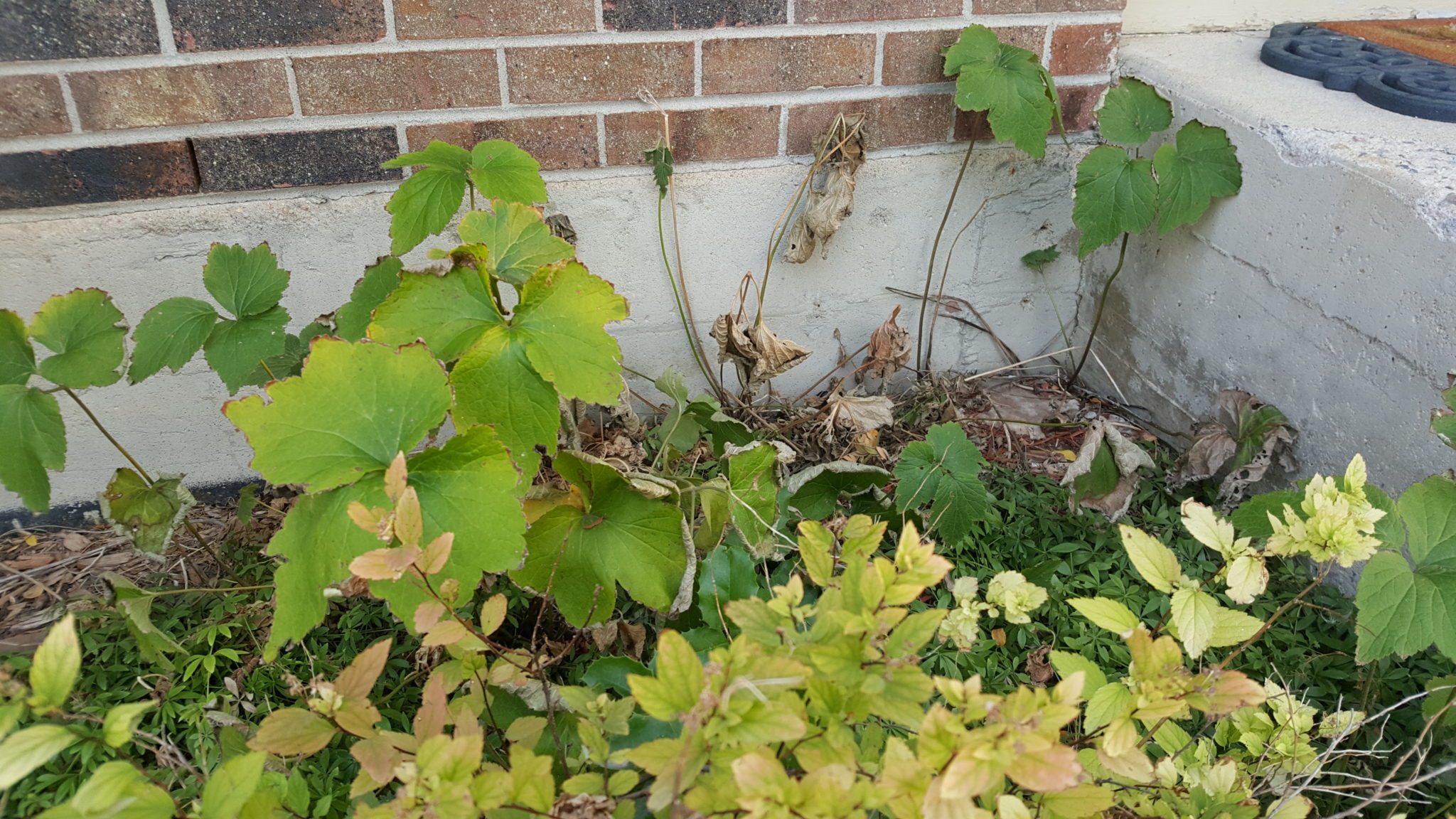
Below is a stock photo of what the flower should look like:
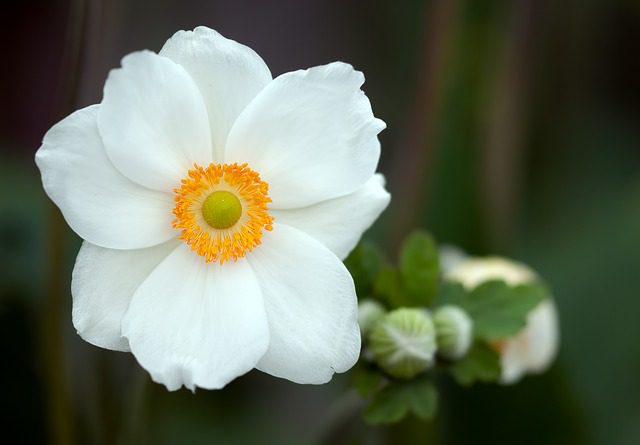
Below is a North American native, the Agastache ‘Sonoran Sunrise’. Once it matures it should reach three feet tall and wide, and provide a plethora of purple & orange blooms you see here.
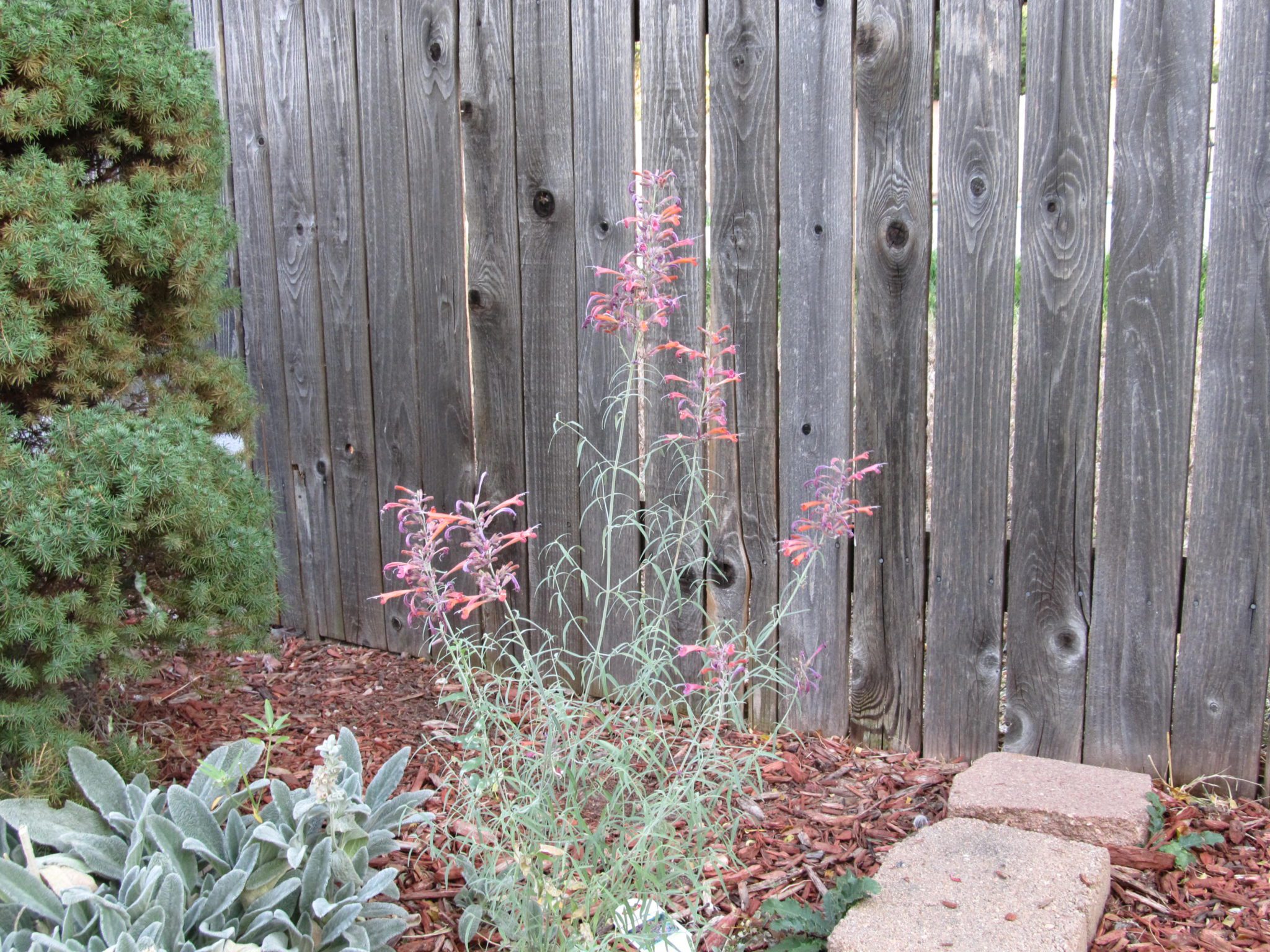
Another fall blooming native perennial that does well in my garden is Rabbitbrush. Also known as ‘Chamisa’, it populates open fields throughout much of the American West. I didn’t plant any in my yard, they self-seeded themselves from the nearby fields. I left them because they look awesome mixed in with my other drought tolerant plants.
Here you can see its cheerful yellow flower mingling with Russian Sage, ornamental oregano and ‘Karl Foerster’ ornamental grasses.
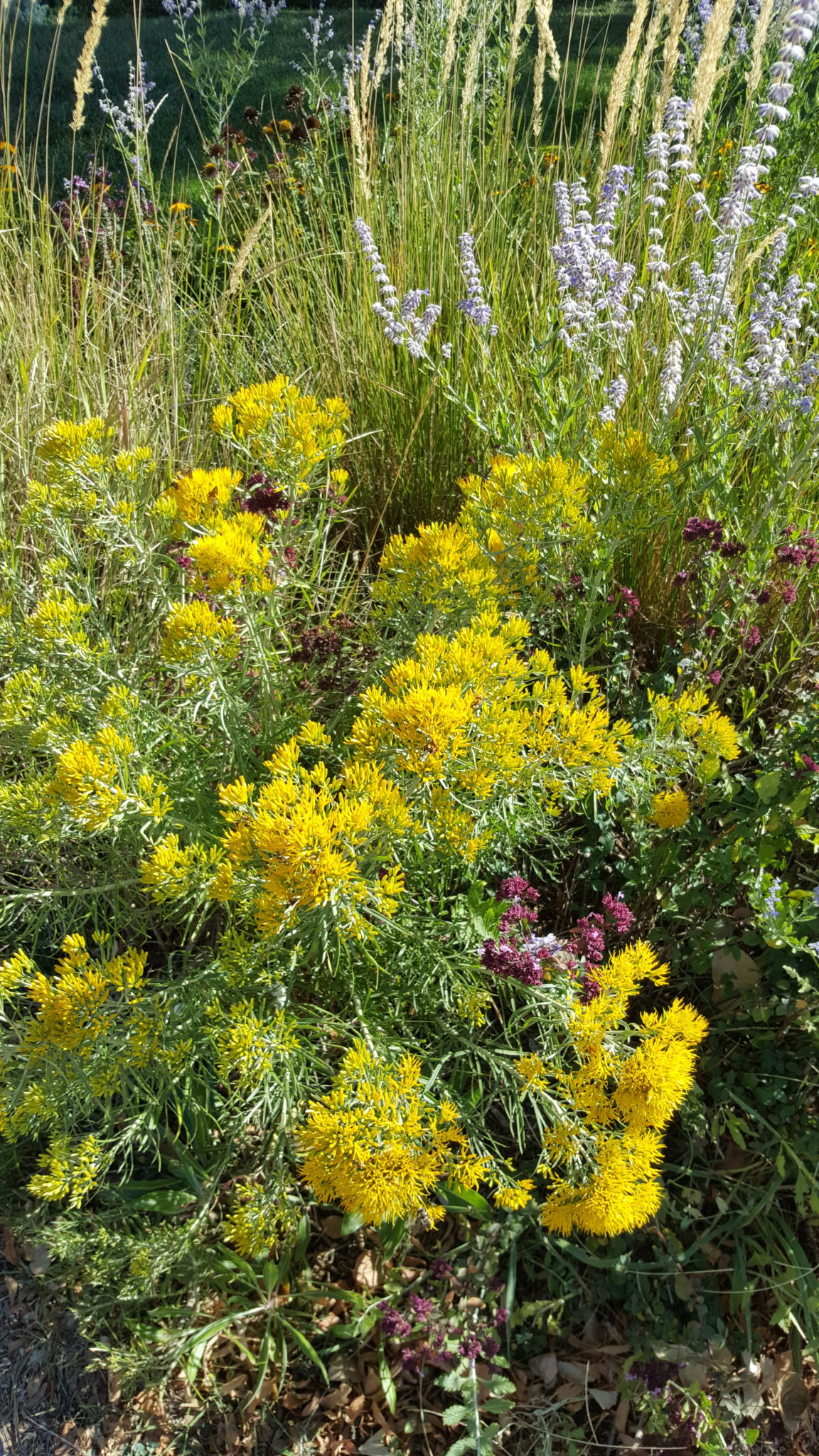
Finally, we come to one of my favorite groundcovers, the Plumbago. The cobalt blue flowers appear in late August and usually linger well into October. As an added bonus, the leaves turn bright red and orange as the nights start to cool off.
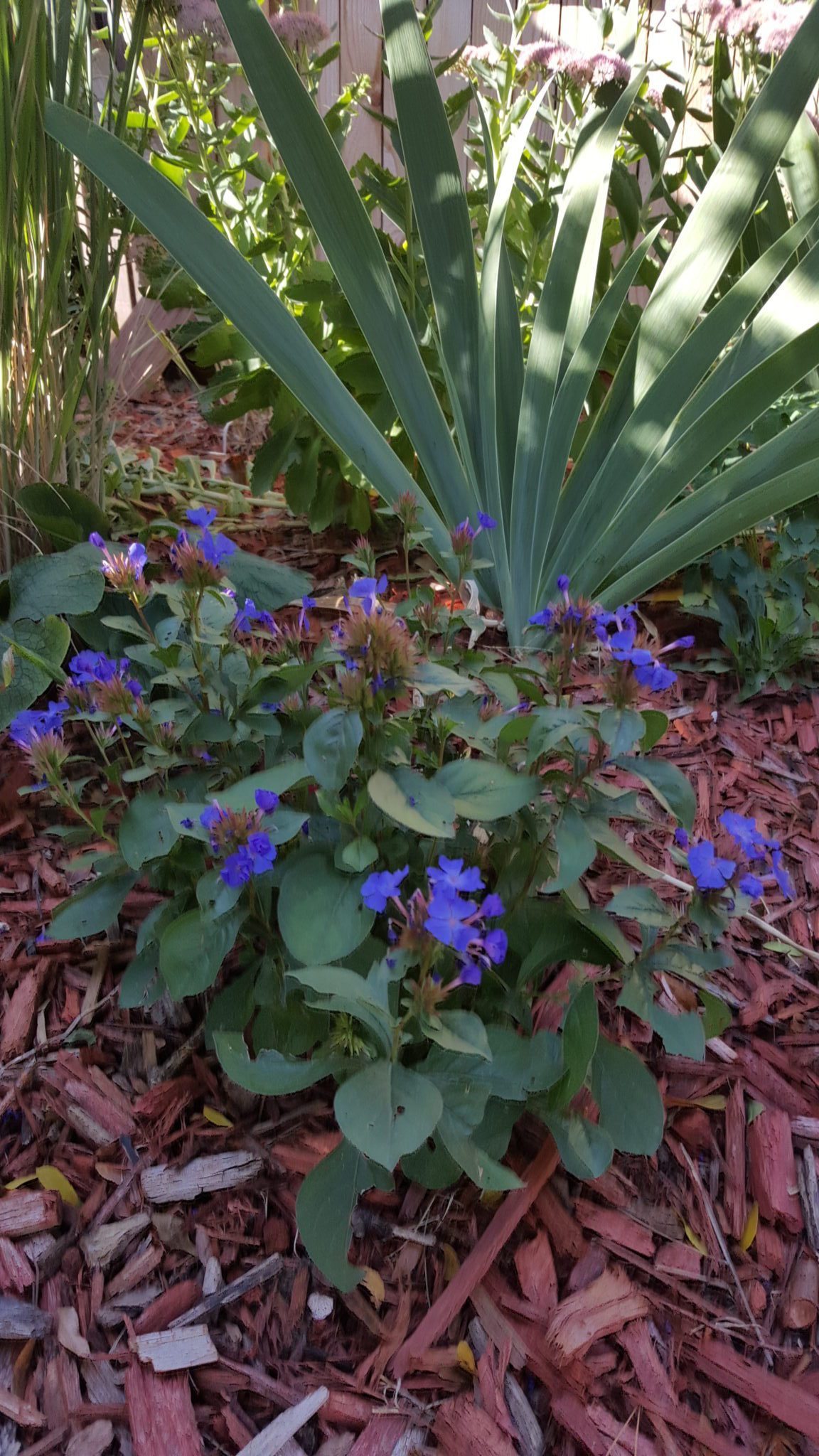
So there are some of the fall bloomers that have done well in my high prairie Zone 5 garden. In my next post, I will make suggestions on selecting trees and shrubs for colorful autumn foliage, as well as the pros and cons of doing so.

